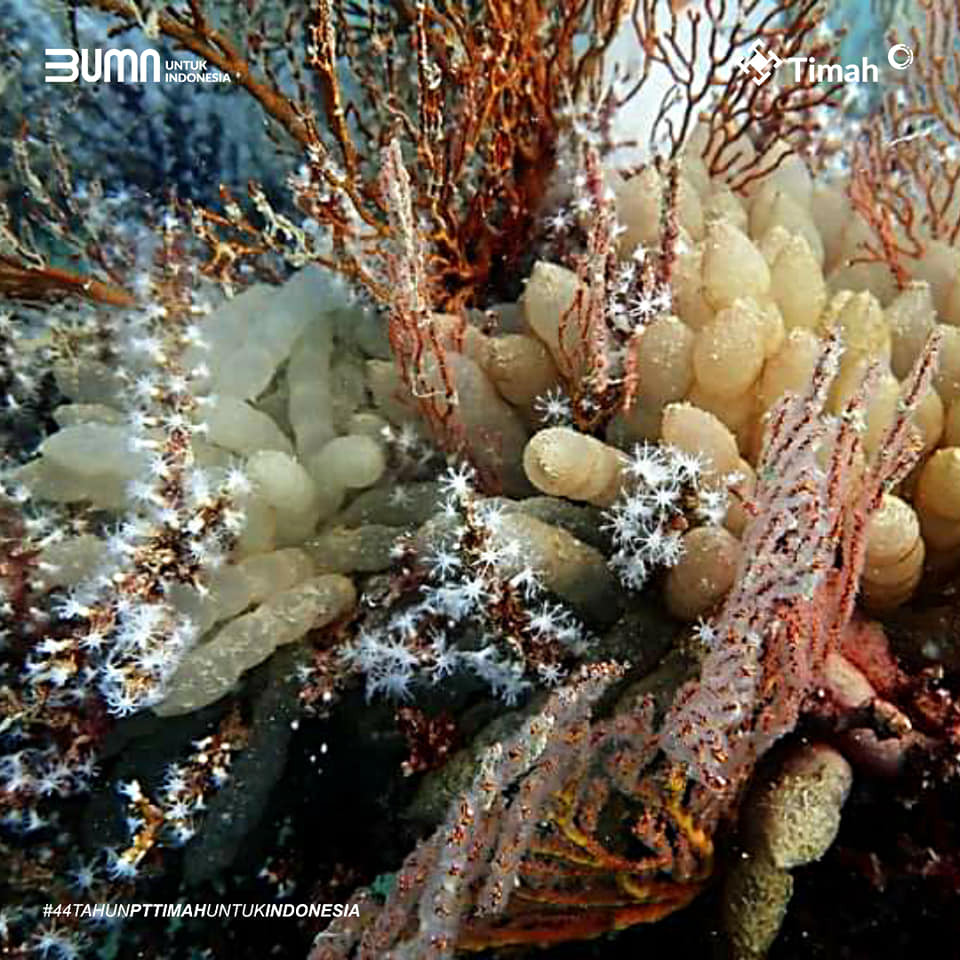
The squid restocking is in line with the marine reclamation that has been carried out by PT Timah by sinking the artificial reef, where the fish shelter that has been drowned has been plastered with squid eggs. It's just that, unfortunately, the squid eggs attached to the fish shelter are often preyed on by predatory fish so they cannot hatch and the mortality rate is high.
Based on this, PT Timah Tbk initiated to carry out restocking of squid, so that squid eggs attached to the fish shelter can be hatched and become new populations so that more squid are in the waters of Bangka Belitung.
Head of Corporate Communication of PT Timah Tbk, Anggi Siahaan, said that for the first year, his party is targeting to restore as many as 20 thousand squid chicks. This restocking system is in collaboration with Bangka Belitung University. "We have conducted trials with the academic community and lecturers from Bangka Belitung University and it was successful. Later, the squid eggs attached to the fish shelter are lifted to be placed in a large aquarium that has been prepared by UBB to be hatched, after about two weeks they will be returned to the sea. Because of this method, the program is called squid restocking, "said Anggi.
He said, through this squid restocking, it is hoped that the fishermen's catch will increase. As is known, Bangka squid has its own uniqueness where it is larger in size with chewier meat and of course has a high economic value. "This is the first year we are doing this as a form of population enrichment. This is an extraordinary development, because if the squid eggs hatch naturally, they have a high mortality rate. Whereas previously in the fish shelter that we made there were lots of squid eggs attached. This time, we are targeting 20 thousand cubs to be released as this squid restocking program, ”he said.
Meanwhile, Lecturer of Marine Science at Bangka Belitung University, Indra Ambalika said that restocking squid can maintain the supply chain of squid. The reason is that currently squid continues to be caught without sorting, from the smallest to the largest cendol size. “PT Timah seems to be the first to do this squid restocking. They can be called the initiator. Our stock of squid is running low because even the cendol has been caught. With the creation of this squid hatching method, the young will be released back into the sea, "he said.
According to him, stock of squid eggs is not too difficult to find, because almost every season the squid always lay eggs, it's just the place that moves around. He gave an example, during the west monsoon season, squid lay eggs in the eastern and northern waters of Bangka Island. Meanwhile, in the middle of the eastern monsoon season the squid lay eggs a lot in the southern waters of Bangka Island and the wind coming from the north is still laying eggs.
"The system is that the squid eggs attached to the fish shelter that PT Timah drowned were what we took, because the results of our monitoring of the fish shelter that was drowned from 2016-2020 were plastered with squid eggs. Then it is brought ashore to be hatched using the seawater controlled container method. Later, around two weeks of age, we will return it to the sea so that it is more likely to live because it releases it into waters far from Bagan and coral reefs, "he said.
According to him, the hatching success rate from the research results was above 8 percent. He explained that the capacity of the squid hatchery control container that is owned can accommodate around 10 thousand squid. "This capacity can be 10 thousand for hatching. There are a lot of squid eggs, one squid egg capsule can be 3-7 squid and usually we can find hundreds of capsules. In one fish shelter, 8-10 groups can be released. 1 bunch of hundreds of capsules. Our baby squid releases when its size is about 2 cm with an age of 5-10 days. We let go quickly because they have to be able to adapt to the marine ecosystem so that they can survive and be smooth. If it is released, it will be more difficult to adapt, "he concluded. (**)